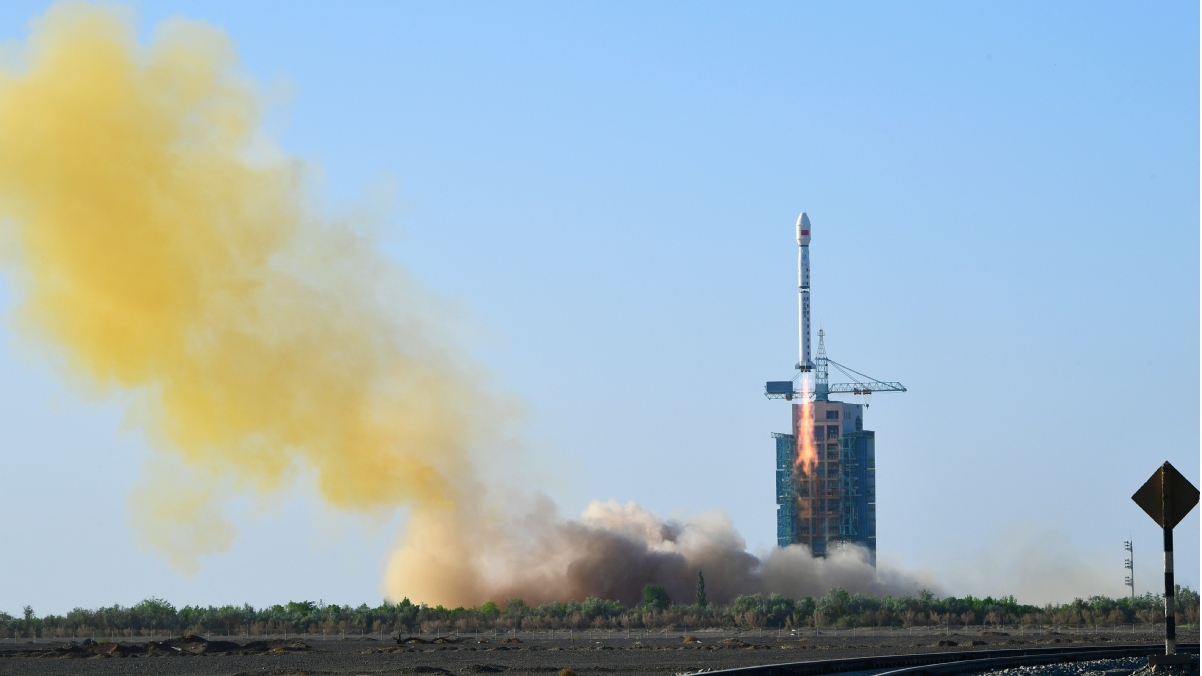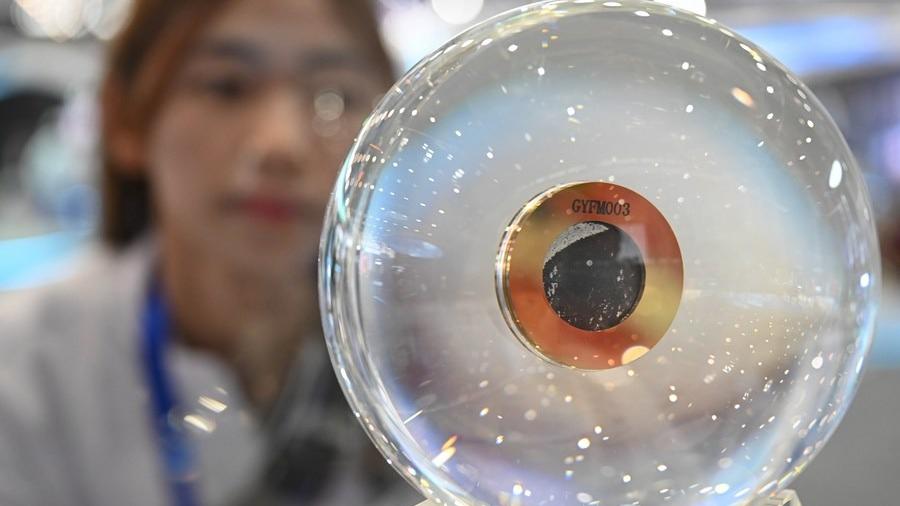
BEIJING - China unveiled a national mid and long-term development program for space science on Tuesday, which will guide the country's planning of space science missions and space research from 2024 to 2050.
The program, the first of its kind at the national level, was jointly released by the Chinese Academy of Sciences (CAS), the China National Space Administration and the China Manned Space Agency at a press conference held by the State Council Information Office.
The program outlines the development goals of China's space science, including 17 priority areas under five key scientific themes, as well as a three-phase roadmap.
The five key scientific themes include the extreme universe, space-time ripples, panoramic view of Sun-Earth, habitable planets, and biological and physical sciences in space, Ding Chibiao, vice-president of the CAS, said at the press conference.
The theme of extreme universe focuses on exploring the origin and evolution of the universe, revealing the physical laws under extreme cosmic conditions. The priority areas range from dark matter and extreme universe to the universe's origin and evolution, as well as the detection of cosmic baryonic matter, according to the program.
ALSO READ: Shenzhou XIX crew to launch in late October

The theme of space-time ripples centers on detecting medium to low-frequency gravitational waves and primordial gravitational waves, with the goal of uncovering the nature of gravity and space-time. The priority area within this theme is space-based gravitational wave detection, Ding said.
The Sun-Earth panoramic view theme involves the exploration of the sun, the Earth, and the heliosphere to unravel the physical processes and laws governing the complex interactions within the Sun-Earth system. Priority areas include Earth's cycle systems, comprehensive observations of the Earth-Moon, space weather observation, three-dimensional solar exploration, and heliosphere exploration, according to the program.
Scientists will also explore the habitability of celestial bodies in the solar system and exoplanets, as well as search for extraterrestrial life. Key areas in the subject cover sustainable development, the origin and evolution of the solar system, characterization of planetary atmospheres, the search for extraterrestrial life, and exoplanet detection.
The theme of biological and physical sciences in space seeks to reveal the laws of matter movement and life activities under space conditions to deepen the understanding of fundamental physics, such as quantum mechanics and general relativity. Priority areas encompass microgravity science, quantum mechanics and general relativity, and space life sciences, Ding added.
ALSO READ: China unveils moon-landing spacesuit for the first time
The program also outlines a roadmap for the development of space science in China through 2050.
In the first phase, leading up to 2027, China will focus on the space station operation, implementing the manned lunar exploration project, and the fourth phase of its lunar exploration program as well as the planetary exploration project. Five to eight space science satellite missions will be approved during the period, according to the program.
The international lunar research station initiated by China will be constructed during the second phase from 2028 to 2035, and approximately 15 scientific satellite missions will be carried out during this period.
In the third phase from 2036 to 2050, China will launch over 30 space science missions.

In the first phase, leading up to 2027, China will focus on the space station operation, implementing the manned lunar exploration project, and the fourth phase of its lunar exploration program as well as the planetary exploration project. Five to eight space science satellite missions will be approved during the period, according to the program.
The international lunar research station initiated by China will be constructed during the second phase from 2028 to 2035, and approximately 15 scientific satellite missions will be carried out during this period.
In the third phase from 2036 to 2050, China will launch over 30 space science missions.
In the next decade, China's space station will focus on cutting-edge technologies, addressing major national needs, and promoting the health and well-being of its people. It will focus on four research areas, namely, space life and human body research, microgravity physics, space astronomy and Earth science, and new space technologies and applications, according to Lin Xiqiang, deputy director of the CMSA.
China plans to launch a 2-meter caliber space telescope to explore the forefront issues in space astronomy. In order to support its operation and research, scientific centers have been established at Peking University, the Yangtze River Delta region and the Guangdong-Hong Kong-Macao Greater Bay Area, aiming to achieve breakthroughs in cosmology, galaxy science, as well as the study of celestial bodies in the Milky Way and the solar system, Lin said.
China's manned lunar exploration program will provide a historical opportunity for exploring extraterrestrial bodies. "We will coordinate the use of the unmanned tests and manned lunar missions to carry out large-scale space science experiments. Currently, we have planned initial scientific objectives in areas such as lunar science and resource exploration and utilization," Lin added.
China's Chang'e-5 mission retrieved samples from the moon weighing about 1,731 grams in 2020, which were the youngest lunar samples ever obtained by humans.
Yang Xiaoyu, director of the Department of System Engineering of the CNSA, said at the press conference that the administration has delivered more than 80 grams of the Chang'e-5 samples to 131 Chinese research teams, leading to significant scientific discoveries across multiple fields.
China's Chang'e-6 mission collected 1,935.3 grams of samples from the far side of the moon in June this year, achieving an unprecedented feat in human lunar exploration history.
Chinese scientists have conducted physical, mineral and chemical composition analysis of the Chang'e-6 samples. Preliminary research suggests that the samples contain information related to the early evolution of the moon and volcanic activities on the far side of the moon, Yang said.
China will launch the Chang'e-7 and Chang'e-8 missions, and is currently assessing the feasibility of building an international lunar research station on the moon. The Chang'e-7 mission will explore the environment and resources of the south pole of the moon, while the Chang'e-8 will conduct experiments for the in-situ utilization of lunar resources and form the basic model of the lunar research station with the Chang'e-7, according to Yang.
In addition, China plans to send a probe to a near-Earth asteroid to retrieve samples as part of the Tianwen-2 mission, with an aim to reveal the formation and evolution process of asteroids and the early history of the solar system.
China also plans to launch the Tianwen-3 mission to collect Martian samples for studying the planet's environment. For the Tianwen-4 mission, China plans to explore the Jovian system to study the evolutionary history of Jupiter and its moons and unravel the mysteries of Jupiter's space environment and internal structure, Yang said.



